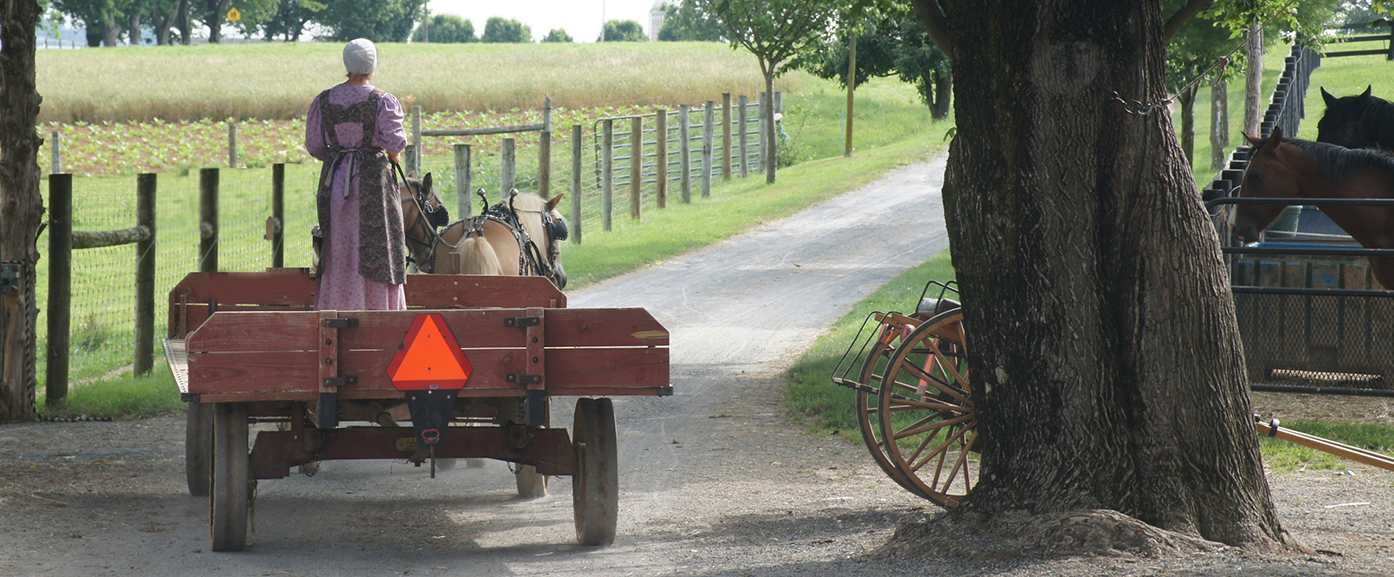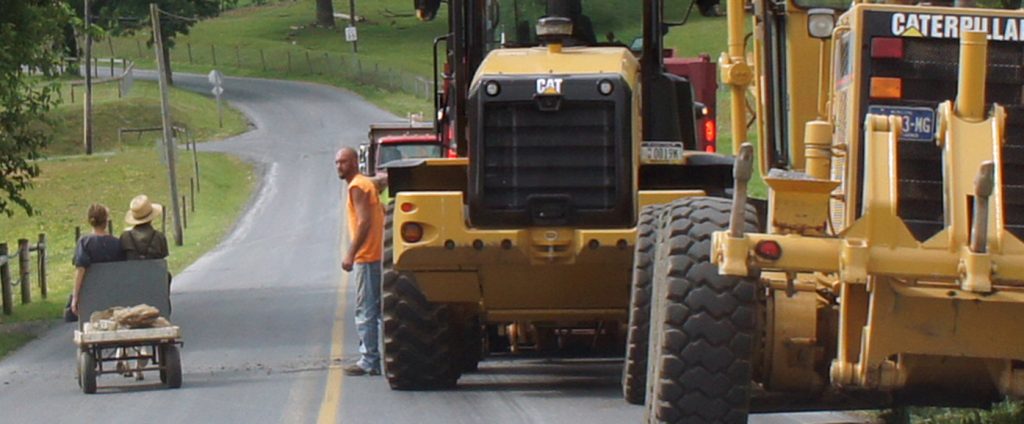
Written by Art Petrosemolo
I knew there were still buggies transporting Amish and Mennonite families in and around New Holland when I moved to Sycamore Springs in January. I just didn’t know there were so many.
Early on, writing for the Ephrata and Lititz newspapers, I said I wanted to write a “Share the Road” story to call attention to the reality that if the buggy driver and the auto or truck driver aren’t careful, it can be a disaster.
My friend John Lapp from Genuine Flowers, New Holland, even agreed to take me out to photograph from the back of a spring wagon so I could get a photo of an oncoming truck on Railroad Avenue and the wagon I was riding in.
Good weather and bad. Main roads and back roads. It just takes slowing down and looking before passing to be safe. On the heavily traveled roads, it can be problematic for autos, trucks and buggies and downright dangerous.
My research shows there are 8000 Amish and Old Order Mennonite families in Lancaster County. If each family has two buggies (most have three or even four), it means at any one time, a lot of buggies can be on the road. My Amish and Mennonite friends tell me carriages travel at 8-10 mph and a trip of 10 miles each way isn’t uncommon.
Although I had made arrangements with John Lapp to take me out this summer so I could photograph oncoming traffic – especially trucks – from the back of the wagon, I soon realized my best photos to illustrate this story have been taken from my vehicle from right behind a carriage on a two-lane road as a bus or truck approaches. It all involves a lot of luck and a steady hand as I photograph through the windshield with a patient driver behind me. Surprisingly, I have been in the perfect situation several times.
Recently, I have made good friends in Anna and Lois Hoover from a farm on Reidenbach Road here in New Holland. For more than a dozen years they have been training carriage and farm horses for local and out-of-state owners. Their insight helped me get a feel for the dangers to both the English as well as Amish/Mennonite drivers on county roads.
Here are some of the things I have learned about safety on the Lancaster County roads we share with horse drawn carriages and farm vehicles from the Hoover sisters.
The sisters describe an early June accident to one of their relatives on Railroad Avenue. The woman was driving a carriage with 50 quarts of strawberries and was forced off the road by a speeding teenager from Ephrata. Both the carriage flipped and the car ended up in the ditch. When the police arrived, the sisters told me, it looked like a very serious accident as the strawberries – spread across Railroad Avenue – looked like blood. Fortunately, no one was hurt, but it could have been worse.
So, as someone here at Garden Spot Village told me early on, even with less traffic in the area, it is possible trips will take longer than planned. Even more reason for all of us to keep our eyes wide open as we approach our Amish and Mennonite neighbors in their carriages and horse-pulled farm vehicles.
